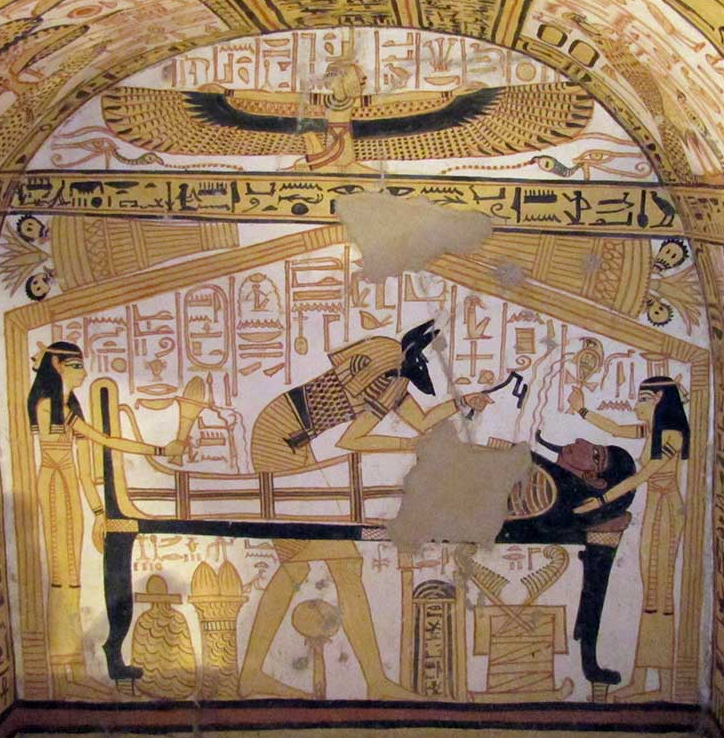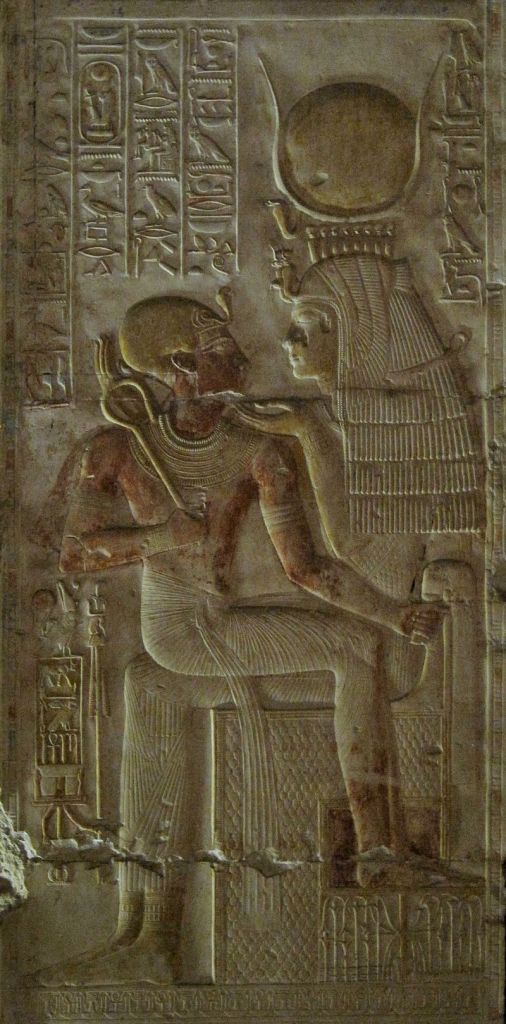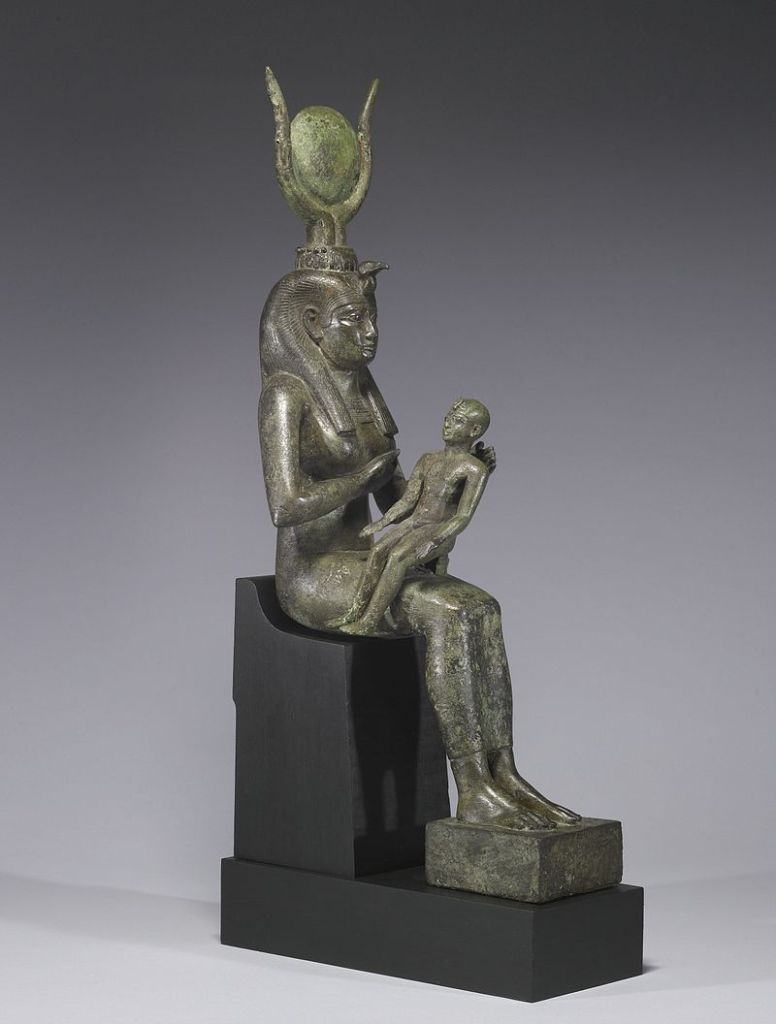Isis was the Egyptian goddess of motherhood, the afterlife, the sky, magic, kingship and the protection of the kingdom.
Symbols: Tyet
Cult Centre: Philae and Behbeit el-Hagar
Parents: Geb and Nut
Siblings: Osiris, Set, Nephthys and Horus the Elder
Consort: Osiris
Children: Horus the Younger
Greek equivalent: Isis
Roman equivalent: Isis

She was usually portrayed as a human woman wearing a throne-like hieroglyph on her head.
Roles
Afterlife: In the Osiris myth, Set kills his brother Osiris and dismembers his corpse. Isis and Nephthys, along with other deities such as Anubis, search for the pieces of their brother’s body and reassemble it. Finally, Isis restores breath and life to Osiris’ body and copulates with him, conceiving their son, Horus. After this point Osiris lives on only in the Underworld. But by producing a son and heir to avenge his death and carry out funerary rites for him, Isis has ensured that her husband will endure in the afterlife.

Isis’s role in afterlife beliefs was based on that in the myth. She helped to restore the souls of deceased humans to wholeness as she had done for Osiris. Like other goddesses, such as Hathor, she also acted as a mother to the deceased, providing protection and nourishment.
Goddess of Kingship and Protector of the Kingdom: Horus was equated with each living pharaoh and Osiris with the pharaoh’s deceased predecessors. Isis was therefore the mythological mother and wife of kings.

Goddess of Magic: Isis was also known for her magical power, which enabled her to revive Osiris and to protect and heal Horus, and for her cunning.
Sky goddess: Many of the roles Isis acquired gave her an important position in the sky. Passages in the Pyramid Texts connect Isis closely with Sopdet, the goddess representing the star Sirius, whose relationship with her husband Sah, the constellation Orion, and their son Sopdu parallels Isis’s relations with Osiris and Horus.

2. Winged Isis at the foot of the sarcophagus of Rameses III. Louvre.
3. Isis, in the form of a bird, copulates with the deceased Osiris. At either side are Horus, although he is as yet unborn, and Isis in human form. Temple of Seti I, Abydos. (c) Olaf Tausch
In the Hellenistic period, Isis was worshipped by Greeks and Egyptians, along with a new god, Serapis. Their worship diffused into the wider Mediterranean world. Isis’ Greek devotees ascribed to her traits taken from Greek deities, such as the invention of marriage and the protection of ships at sea, and she retained strong links with Egypt and other Egyptian deities who were popular in the Hellenistic world, such as Osiris and Harpocrates. As Hellenistic culture was absorbed by Rome, the cult of Isis became a part of Roman religion.




